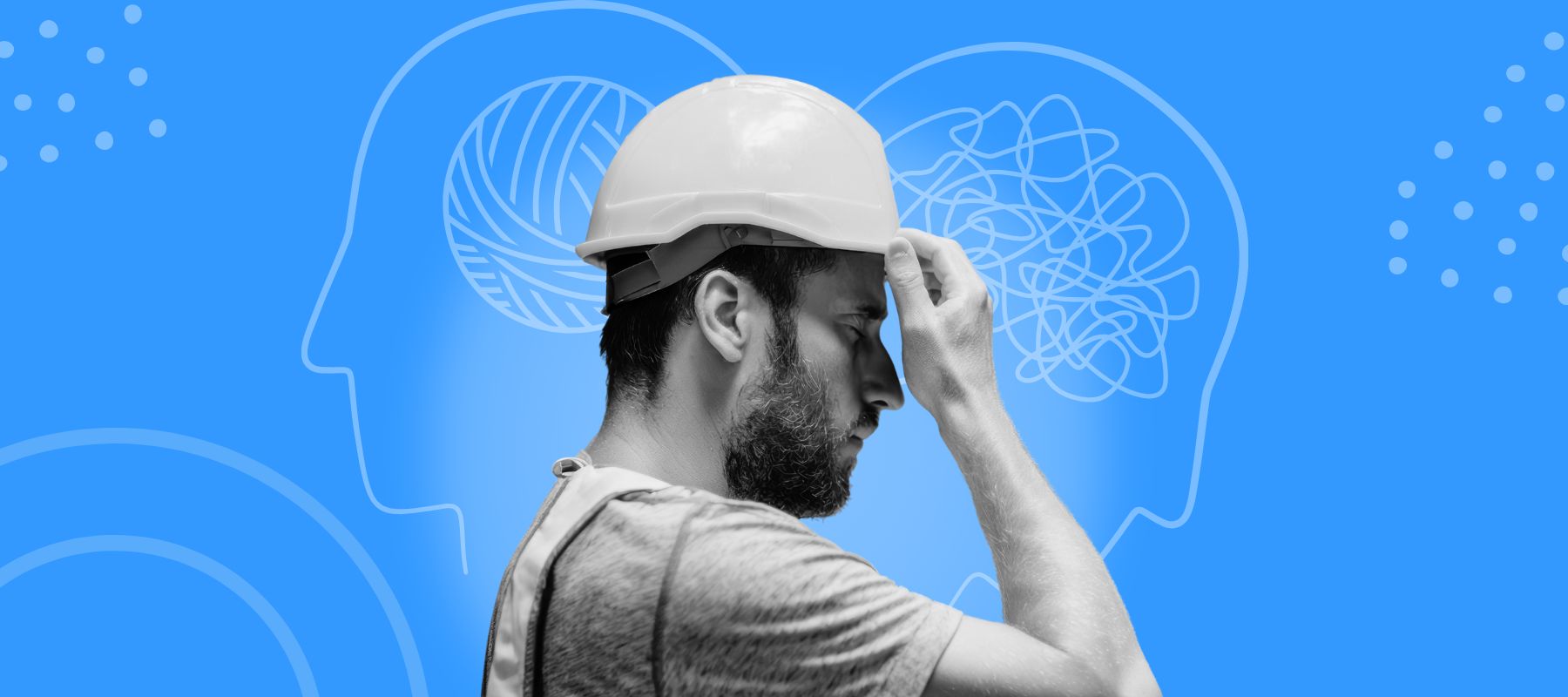AI Summary
Heat stress affects your brain, not just your body.
- ✨ High heat slows your thinking, reduces focus, and makes errors more likely—raising workplace risks.
- ✨ Check in with yourself and teammates regularly, spotting early signs like fatigue, distraction, or irritation.
- ✨ Stay safe by hydrating often, taking cooldown breaks, and speaking up if something feels off.
.jpg)
Southern Europe is facing another extreme heatwave (1).
And it won’t be the last.
Each summer, high temperatures are becoming more common and more dangerous. For workers in the field, on the road, or in hot indoor environments, the risks are rising fast.
We often think of heat stress as a physical problem.
But the truth is: it affects your brain, too.
What is heat stress?
Heat stress happens when your body struggles to cool down.
When it’s too hot, your heart works harder. You sweat more. You lose fluids.
You may feel tired, dizzy, or irritable.
But it doesn’t stop there.
Heat also affects how you think.
.jpg)
How heat impacts your brain and behavior
In a study during a heatwave, students who slept in rooms without air conditioning performed 10% worse on brain tests compared to those in cooler rooms (2).
Their reaction time slowed down. They made more mistakes.
Similar drops in performance happen at work — even when the temperature is just above 24°C (3).
Heat can:
- Slow your focus
- Affect your memory
- Increase frustration
- Reduce awareness
- Lead to poor decision-making
These are not small issues — especially when you're operating machinery, driving, lifting, or working in dangerous environments.
The safety risk: small errors in hot conditions
When you're hot and tired, your brain goes into survival mode.
That’s when mistakes happen.
You forget steps.
You react too slowly.
You miss early warning signs.
And that can lead to incidents, injuries — or worse.
So what can we do? Start with self-awareness.
You can’t always control the temperature.
But you can control your response.
Tip 1: Rate Your State
Take a moment during the day to ask yourself:
- Am I alert or foggy?
- Focused or distracted?
- Calm or irritated?
Being honest about how you feel helps you catch fatigue early.
Tip 2: Self-Trigger
If you notice signs of heat stress — act.
Don’t wait until it gets worse.
✅ Drink water
✅ Take a short break
✅ Find shade or cool air
✅ Splash your face
✅ Reset your focus
These small actions prevent bigger problems later.
Tip 3: Observe Others
Sometimes, it's easier to see the signs in someone else than in yourself.
Look out for teammates who:
- Seem confused or slow to respond
- Stop talking or moving as much
- Look red-faced, pale, or shaky
If something feels off, say something.
What HSE managers can do
As an HSE leader, your role is to protect people — especially when risks aren’t obvious.
Here’s how you can help:
- Encourage hydration early and often
- Build cooldown breaks into the schedule
- Remind teams to rate their state
- Talk about the early signs of fatigue
- Normalize speaking up before a mistake happens
- Reinforce daily safety habits with training and tools
Habits are the key.
It’s not enough to hand out water and hope for the best. We need to help people build reflexes that keep them safe — no matter the conditions.
Final thoughts
Heat stress is more than physical.
It’s mental. It’s behavioral. And it’s preventable.
When we help people recognise how they feel, take action early, and support one another — we reduce the risk before it becomes a crisis.
This summer, don’t just check the weather.
Check in with yourself. And your team.
Stay aware.
Stay hydrated.
Stay safe.
Sources:
- (1) https://www.lemonde.fr/en/environment/article/2025/07/01/heatwave-claims-several-victims-in-southern-europe_6742902_114.html
- (2) https://doi.org/10.1371/journal.pmed.1002605
- (3) https://onlinelibrary.wiley.com/doi/epdf/10.1111/ina.12916




.avif)


